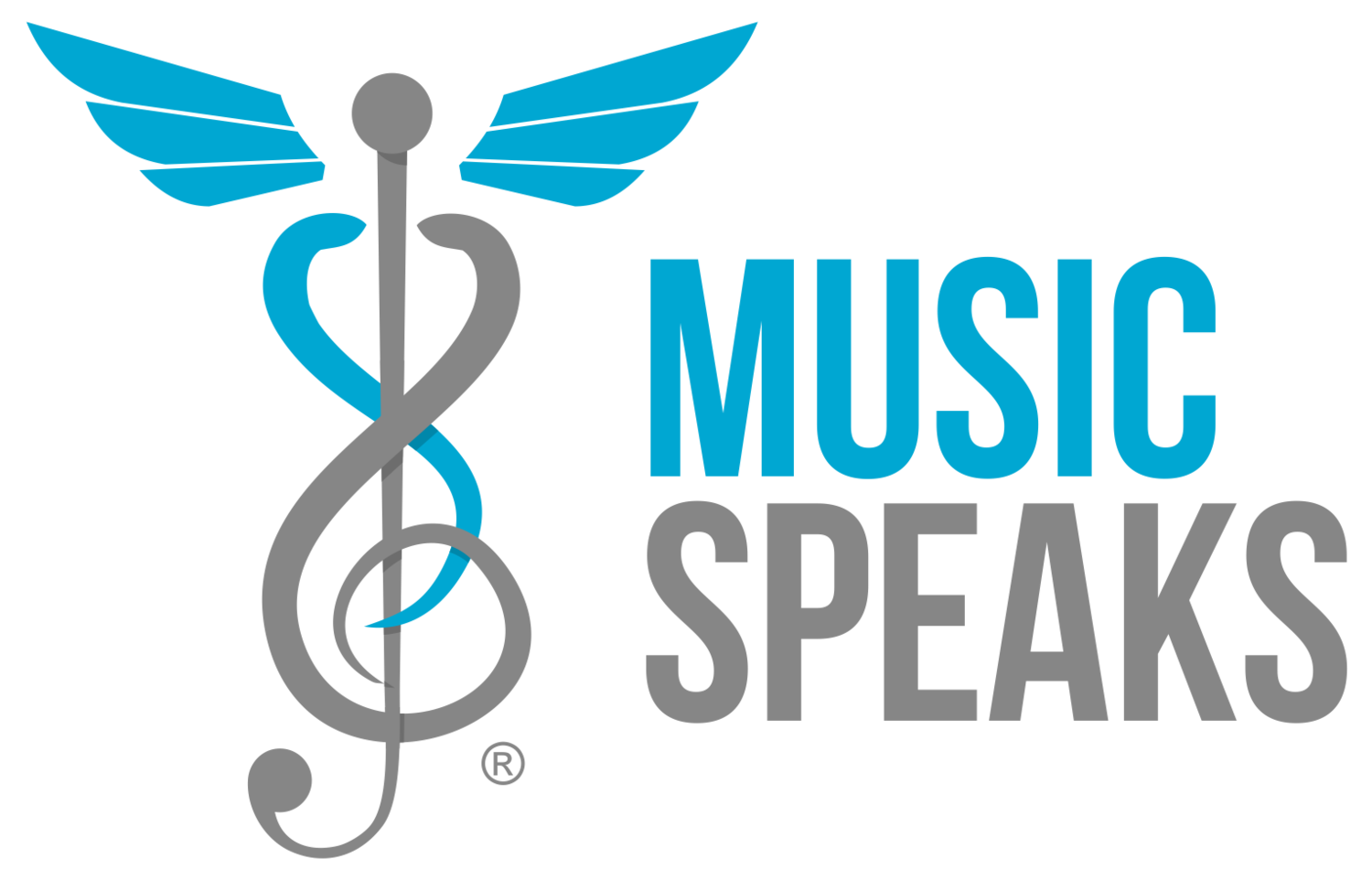Populations Served by Music Speaks
Music Speaks is proud to be able to offer music therapy services to a diverse set of populations. From the veteran experiencing post-traumatic stress disorder, to a young child going through vision loss, to an older adult recovering from a stroke, to an adolescent unable to verbalize or communicate, we are able to serve these clients and more. Please read on to learn about how we can make music your medicine.
We cover the following populations on this page:
Developmental delays & Sensory Needs
Medical
Neurological disorders
Mental Health
Hospice/Palliative
Developmental delays & sensory needs
A board-certified music therapist can address the physical, cognitive, emotional, social, and sensory needs of both children and adults in a variety of settings. Music therapy interventions can be used to help decrease anxiety, isolation, agitation, impulsivity, inattentiveness, confusion and distress, and pain or the perception of pain. Likewise, interventions can also be used to increase communication, emotional stability, sensory regulation, socialization, and strength and motor control.
You may see a music therapist working with clients with the following:
Hearing loss
Vision loss
Intellectual Disabilities
Sensory Needs
Medical
Music therapy is a healthcare profession that uses clinical and evidence-based interventions to address non-musical goals. Music therapy sessions may address areas including, but not limited to: pain and discomfort, anxiety and restlessness, nausea, isolation, difficulty coping, respiratory distress, depression, procedural support, sense of loss, and expression. Having a music therapist on the healthcare team can influence patient satisfaction scores and is also a cost-effective treatment option.
You may see a music therapist working in the following medical settings:
Pediatric
Adult
Pre-op & post-op
NICU
Inpatient & outpatient
neurological disorders
A board-certified music therapist will use standardized music techniques to directly influence the brain and functional outcomes. These techniques focus on the sensorimotor, speech and language, or cognition goal areas. For example, music interventions may be used to facilitate rehabilitation of intrinsic movement like gait, facilitate motor planning, enhance control and respiratory strength, or focus attention to a neglected or unattended visual field.
Stephanie Johnson, MT-BC, sings with a client during a session to prompt increased verbalization.
Examples of populations we may use these techniques with are listed below:
Stroke, multiple sclerosis (MS), Parkinson’s, dementia, traumatic brain injury (TBI)
Sensory needs
Mental Health
A board-certified music therapist will use clinical and evidence-based interventions to achieve non-musical goals while working closely with the interdisciplinary care team. Music interventions are typically active rather than passive in order to stimulate multiple parts of the brain and achieve functional outcomes. Music therapists may use these interventions to decrease anxiety, self-harming behaviors, confusion, distress, or impulsivity. Interventions can also be used to increase coping skills, self-awareness, stress management, relationship building, and emotional awareness.
This is not an all-inclusive list as music has a strong impact on the brain’s neural connectivity and can be used to target individualized goals.
Adolescents
Veterans
Substance use
Trauma
Hospice/Palliative
In hospice care, a music therapy session is usually one on one with the patient, though sometimes family or loved ones may be present. Some common symptoms that can be positively affected in a music therapy session are pain, anxiety, restlessness, communication issues, respiratory issues, sadness and coping with grief.
You may see a music therapist working with clients in the following stages:
Palliative care
Active dying
Bereavement

